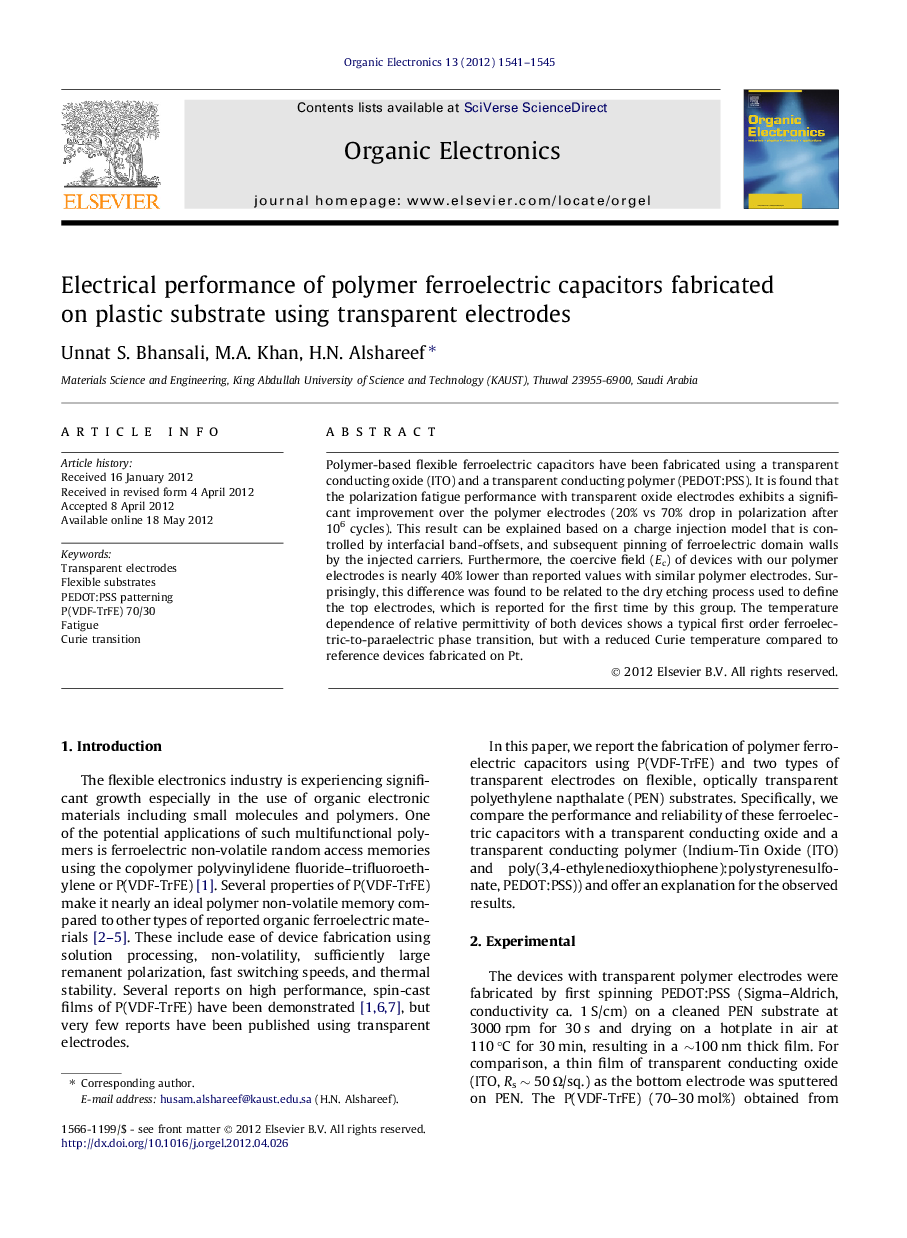| Article ID | Journal | Published Year | Pages | File Type |
|---|---|---|---|---|
| 1264549 | Organic Electronics | 2012 | 5 Pages |
Polymer-based flexible ferroelectric capacitors have been fabricated using a transparent conducting oxide (ITO) and a transparent conducting polymer (PEDOT:PSS). It is found that the polarization fatigue performance with transparent oxide electrodes exhibits a significant improvement over the polymer electrodes (20% vs 70% drop in polarization after 106 cycles). This result can be explained based on a charge injection model that is controlled by interfacial band-offsets, and subsequent pinning of ferroelectric domain walls by the injected carriers. Furthermore, the coercive field (Ec) of devices with our polymer electrodes is nearly 40% lower than reported values with similar polymer electrodes. Surprisingly, this difference was found to be related to the dry etching process used to define the top electrodes, which is reported for the first time by this group. The temperature dependence of relative permittivity of both devices shows a typical first order ferroelectric-to-paraelectric phase transition, but with a reduced Curie temperature compared to reference devices fabricated on Pt.
Graphical abstractFigure optionsDownload full-size imageDownload as PowerPoint slideHighlights► Ferroelectric capacitors using transparent electrodes demonstrated. ► Improved fatigue for ITO electrodes explained based on a charge injection model. ► Reduction in coercive field by patterning top polymer electrode. ► Temperature vs relative permittivity of thin P(VDF-TrFE) films. ► Grain-size dependence of Curie transition temperature.
